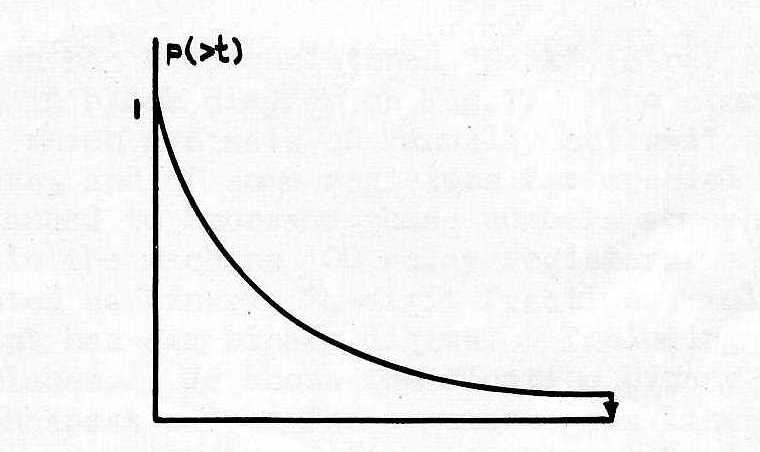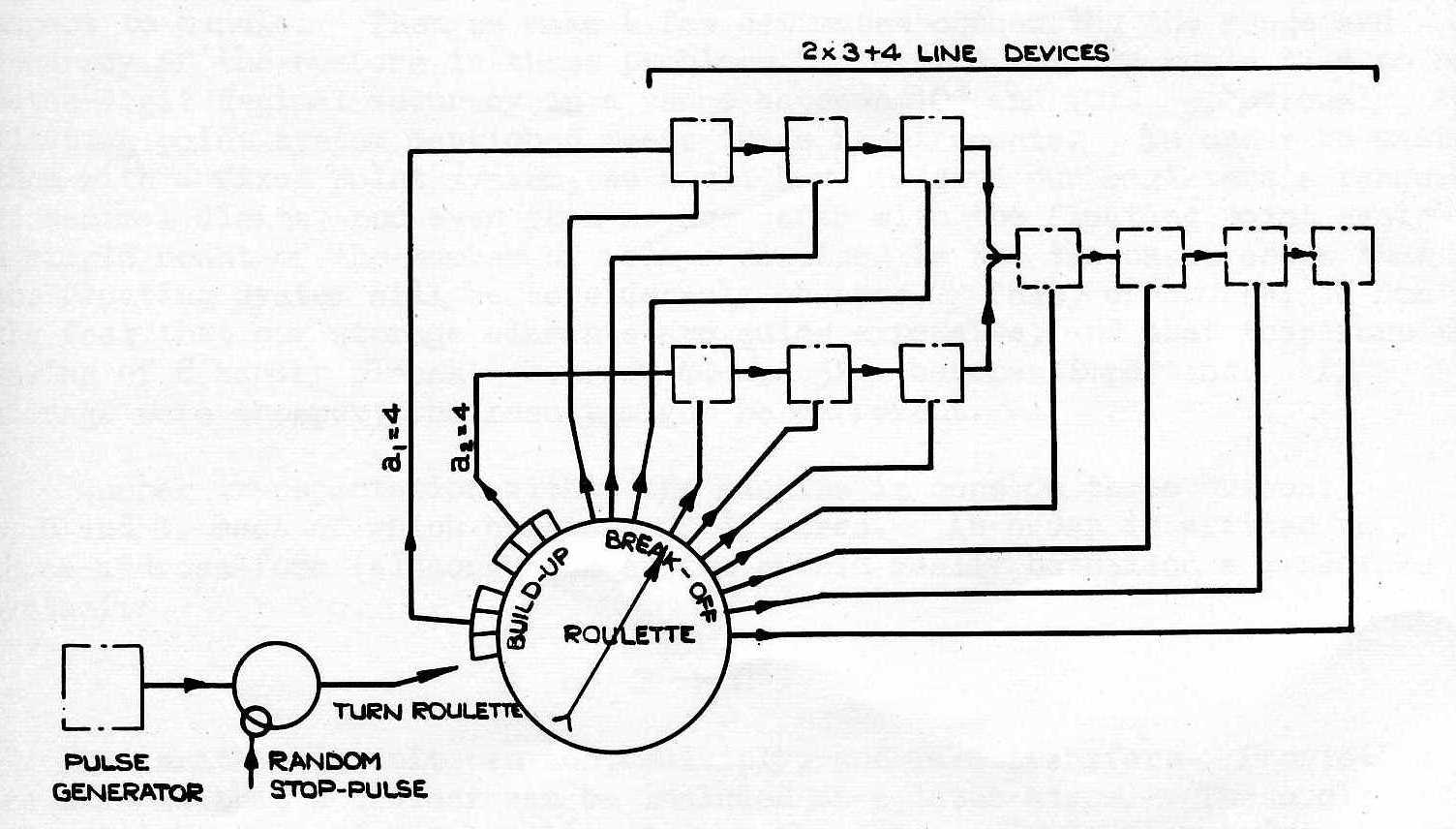

The present conference is devoted to digital computing machines. When digital is understood in the sense that the machines deal with actual numbers in their digital form, the subject of the present contribution might perhaps be said not to be within the scope of this meeting. When, however, it is interpreted in a wider sense, viz. that the machines perform operations on quantizised entities, this also includes fictitious-traffic machines.
The problems dealt with by this type of machine can best be illustrated by the following simple example (fig.1).

A number of telephone-subscribers generate a flow of calls, the times of origination of which are random, at an average rate of say a per unit of time. For putting the calls through there are available in the exchange c lines, which are tested by a new call in a certain order. Every new call seizes the first line in the series that is found unengaged and occupies this line for a certain space of time. The average of this holding-time will be taken as the unit of time.
If all c lines are busy, no new call can be handled (it is lost) and the subscriber is informed of the fact by a busy-tone. It is important to make sure this will not happen more than say 1 in 100 or 1 in 1000 times. This figure is called the probability of blocking. Its evaluation is actually possible for the above simple case.
Unfortunately, the cases really met in practice are much more complicated. It will be clear that the farther back a line is in the series, the fewer times it will be engaged, resulting in a bad output of those latter lines. Hence schemes as e.g. fig. 2 are used, where these poorly occupied lines have been combined for two or more groups of subscribers. The evaluation of the probability of blocking for these schemes is practically impossible. One is led e.g. to consider the solving of a set of linear equations, the number of which equals 2n, n being the total number of lines (say n = 40). Hence, several machines have been constructed for measuring the loss by means of so-called fictitious traffic.

Such a machine is essentially an abstract of a part of an exchange, working with a higher speed. Its principal components are:
The line-units are in the first place inter-connected so as to route the calls in the right order. Moreover, when such a unit becomes engaged, it must behave in a correct way. That means that its holding-time must have the same statistical distribution as the actual calls. In most machines the holding-time is taken to be a constant. Hence every line-unit must contain a delay-part producing this constant holding-time.

In the machine built in 1941 by the The Hague Local Telephone Administration's Laboratory, however; an exponential distribution of holding-times (fig.3) has been assumed, which has two advantages:
It is known that if the distribution is exponential, the behaviour of a busy line does not depend on its past. Hence the line-unit need not possess a timing component. When there is a certain specified state of occupations in the group of lines, the probability that the next event will be the disengagement of a certain busy line will be the same for all busy lines; whereas the probability that this event is the initiation of a new call is a times as large.
Hence the new event may be determined by taking a roulette. a of its numbers are identified with a new call. Stopping of the roulette on such a build-up number results in a new call being offered to the series of line-units. Each line is represented by a single number of the roulette. When the roulette stops on a number connected with an engaged line unit the latter is disengaged. Stopping on numbers connected with non-occupied lines or on numbers that have no qualification, has no further consequence. The roulette, then, is simply turned again.
In figure 4 the interconnection of line-units mutually and with the roulette is shown for the case of figure 2 with a1 = a2 = 4 traffic-units.

The described process is perfectly capable of being automatised, either by relays or electronically.
The 1941 machine in The Hague used relays whereas an electronic machine has recently been built at the G.P.O.'s Research Station at Dollis Hill, London.
In a new project we intend using a magnetic drum in which the interconnection between the line-units mutually and with the electronic roulette is memorised. This saves the setting up of problems by writing and, moreover, makes the materialisation of the roulette by a (rather big) pyramid superfluous. The binary representation of a random number in the range 0, ...... 1024 is sufficient. This is obtained by the random setting of 10 separate binary units.